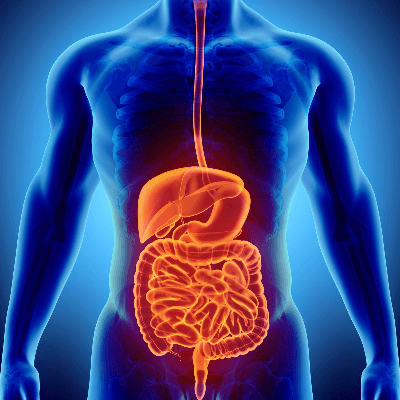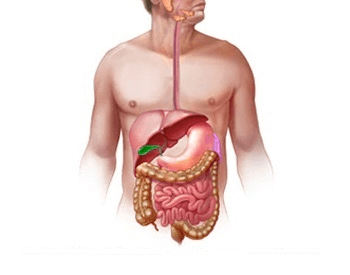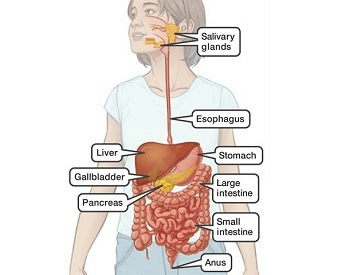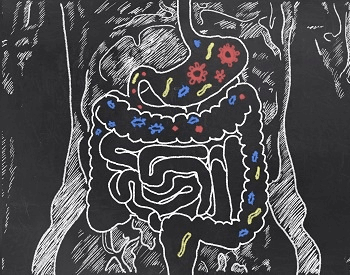
- System: Digestive
- System Name: The Digestive System
- Alternate Names: Cardiovascular system or vascular system
- Location: Upper half of the body (above the legs)
- Purpose: Digestive food and remove waste
- Organs: Upper and lower gastrointestinal tract
18 Digestive System Facts for Kids
- The digestive system is a human biological system that breaks down food so it can be absorbed and used by the body.
- The gastrointestinal tract (digestive tract), gallbladder, liver and pancreas make up the human digestive system.
- The gastrointestinal tract is one long hollow system of organs that starts at the mouth and ends at the anus.
- The flow of food through the human digestive system starts with the mouth, to the esophagus, to the stomach, to the small intestines, to the large intestines and finally the rectum.
- The mouth chews up the food, and your tongue will help push food into your throat.
- The esophagus will help move food from your throat into your stomach.
- The stomach will further breakdown food using digestive fluids before moving it into your small intestines.
- The small intestines will mix fluids from the pancreas, liver and gallbladder with the food and start absorbing nutrients and water for absorption into your bloodstream, before moving into your large intestines.
- The large intestines continue to absorb water and converts liquid waste into a solid before moving it to your rectum.
- The rectum will store solid waste from the large intestines until you have a bowl movement (poop).
- The gallbladder, liver and pancreas are considered accessory digestive organs.
- The liver produces bile that aids in fat digestion, stores important nutrients and helps filter out toxins.
- The pancreas regulates blood sugar and releases enzymes that aid the digestion of carbohydrates, fats and proteins.
- Intestinal gas, commonly called farts, is caused by swallowed air and bacteria in the gastrointestinal tract.
- The digestive system of an adult, from beginning to end, is up to 30 feet in length.
- The small intestines can reach up to 20 feet in length and have a diameter of about an inch.
- The large intestines can reach up to 5 feet in length and have a diameter of about three inches.
- Food will take between six to eight hours to move completely through the human digestive system.
Pictures of the Digestive System

An illustration of all the organs that make up the human digestive system.Credit: Mayo

A diagram that shows you all of the different parts of the digestive system.Credit: About Kids Health

A diagram on a chalkboard showing how food goes through the digestive system.Credit: Spectrum Health
Additional Resources on the Human Digestive System
- How the Human Digestive System Works – Find out how the human digestive system works on the National Institutes of Health website.
- Human Digestive System Diagram – A great diagram of the human digestive system on the Mayo Clinic website.
- Digestive System Diseases – Discover a few of the disorders and diseases that can affect the human digestive system.
- Human Digestive System – Wikipedia – Learn more about the human digestive system on the Wikipedia website.
